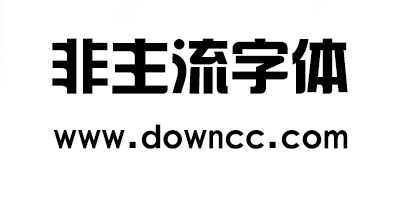
2.05M / 2017-02-10 / ttf免费版
伯乐油画字体ttf版是一款免费的伯乐字体,该字体形状优美,如同油画一般,非常适合制作广告宣传,有需要的小伙伴快来绿色资源网下载吧!字体安装说明1、首先选中你下载的打包字体,并解压你下载的字体压缩包;2、Win
1.75M / 2018-05-23 /
huxiaobogdh字体又叫站酷高端黑字体,是由胡晓波所设计的一款免费字体,笔画粗犷,线条简洁,个性鲜明,设计感强烈,适合用于男性广告、游戏、体育宣传等领域,需要的朋友欢迎下载使用!胡晓波gdh字体特点字形笔画粗
1.26M / 2017-03-28 /
开票系统黑体字体是一款常常用于电脑开票软件的黑体字体,该字体线条粗细相当,结构端正,印刷效果清晰明快,整体庄重大方,有需要者欢迎在绿色资源网下载!字体安装方法方法一:控制面板/字体/文件/安装新字体;方法
3.90M / 2017-07-14 /
手写粉笔字体是一款漂亮的英文字体,支持中英文显示,非常适合用在广告设计或海报设计领域,有兴趣的朋友快来绿色资源网下载吧! 手写粉笔字体安装方法方法一:控制面板/字体/文件/安装新字体; 方法二:直接将字体
2.73M / 2018-01-13 / 完整版
白舟魂心书体字体是一款大气沉稳的白舟字体,字形粗壮厚重,构造严谨,很有韵味,打印出来的效果也非常出色,需要的朋友欢迎在绿色资源网下载!字体安装说明:Win7\Win8\Win10系统:鼠标右键单击字体文件,然后点击>"
1.28M / 2017-02-06 /
白舟樱花书体字体是一款非常漂亮的字体,笔画粗细相称,线条流畅优美,字形清秀大方,适用于广告、海报、包装等设计领域,需要该字体的朋友快来绿色资源网下载吧! 字体安装方法方法一:控制面板/字体/文件/安装新字
5.93M / 2017-02-08 / ttf版
特太行书字体是一款较粗的行书字体,笔墨浓重,沉稳又不失大气,可应用于文学设计、艺术创作、杂志报刊、印刷包装等领域,需要该字体的小伙伴快来绿色资源网下载吧! 字体安装方法方法一:直接将字体复制到C:\WINDO
1.80M / 2017-02-13 / ttf免费版
义启橙啧啧体是一款丑萌又温暖的字体,字形清秀又不失大气,深受大家喜爱,可用于手写设计、广告宣传、出版印刷等方面,有需要者欢迎下载!义启橙啧啧字体安装说明Win7\Win8\Win10系统:鼠标右键单击字体文件,然后点
8.78M / 2017-02-15 /
田氏颜体大字库字体是一款简体字体,笔锋锐利,端正大气,效果出色常常应用于艺术设计和平面设计领域,需要的朋友快来绿色资源网下载!字体安装方法方法一:控制面板/字体/文件/安装新字体;方法二:直接将字体复制到
1000KB / 2017-02-15 /
字体管家方萌字体是一款萌萌哒字体,字形粗黑可爱,笔画清新洒脱,整体散漫随意,识别度非常高,喜欢的小伙伴快来绿色资源网下载吧! 字体安装说明1、首先选中你下载的打包字体,并解压你下载的字体压缩包; 2、Wi
5.85M / 2017-02-16 /
卖萌作死字体是一款笔墨浓重的简体字体,字体粗黑,结构端正,线条圆润可爱,还带有个性十足的花边、小拳头,心形等元素,有兴趣的小伙伴不妨在绿色资源网下载!卖萌作死字体介绍卖萌作死字体是一款效果出众的简体中
5.85M / 2017-02-28 / ttf版
立夏手写体ttf字体是一款极具个性的手写字体,字形洒脱,线条潦草,可用于艺术设计或创意设计领域,欢迎大家在绿色资源网下载! 立夏手写体介绍立夏手写体是一款设计方面的中文简体汉字,字体全部为手写方式,飘逸大
939KB / 2017-03-06 /
濯缨字体草书繁体是一款极具艺术价值的草书字体,用笔恣肆,纵逸奔放,潇洒又典雅,喜欢这款字体的朋友欢迎在绿色资源网下载收藏! 字体介绍濯缨字体草书繁是一款应用于设计方面的的中文草书字体,该字体笔锋犀利,
13.34M / 2017-03-21 /
时光安娜字体是一款独特的手写中文字体,字库完整,字形清新,线条自然流畅,整体效果出色,可应用于一些创意设计或广告设计方面,喜欢该字体的小伙伴欢迎在绿色资源网下载!字体安装方法方法一:控制面板/字体/文件
960KB / 2017-04-01 /
蒙古文字体包是一款小编为大家整理的的蒙文字体合集,包含了传统蒙古文白体、蒙古文报体、蒙古文黑体、蒙古文乌仁体、蒙古文木刻体等几十款热门的蒙文字体,有兴趣的朋友快来绿色资源网下载吧!蒙文字体安装方法方法
3.22M / 2017-08-09 /
飘逸古风字体ttf版是一款具有水墨效果的唯美古风字体,线条流畅生动,充满古典气息,非常精致耐看,喜欢这款字体的朋友欢迎在绿色资源网免费下载! 常用字体选择标题字体一般选择方正兰亭特黑方正粗宋方正粗黑方正大
3.41M / 2017-08-09 /
中文字体菊花体ttf版是一款精致漂亮的中文手写字体,笔画一气呵成,线条潇洒流畅,空隙均匀,资讯构思得当,常常用于艺术设计方面,有兴趣的朋友快来绿色资源网下载吧!字体选择要点好的字体要用好的表现方式,对于每
5.46M / 2017-09-04 /
悦黑yolan字体是一款柔美清晰的悦黑字体,造型秀美,阅读效果好,用在广告、ppt、平台设计等方面时表现力不错,需要的朋友快来绿色资源网下载吧! 中文字体类型常见基本汉字字体有宋体、仿宋体、楷体和黑体。除这四
23.43M / 2017-12-22 /
matisseeb字体又叫eva明朝体,是一款设计精细的优美日文字体,笔画简约,线条柔和,常常用于二次元动漫海报设计,制作效果非常好,感兴趣的朋友可以下载试试!matisseeb字体特点出自日本字体设计公司Fontworks之手。
2.44M / 2017-12-14 /
aajoanna字体又叫aa娜娜体字体,是一款线条流畅气质情切的中文手写字体,字形清晰秀丽,实用性强,可以用作贺卡、包装、电子笔记的字体,喜欢的朋友快来下载吧! 字体设计方法【结构法】:略微改变笔画之问的关系,或
2.70M / 2017-12-14 /
aaxiaonangua字体是一款形似小南瓜的中文可爱字体,外形圆滚滚,活泼可爱,像小孩子的手写字一样,充满天真童趣色彩,喜欢的小伙伴快来下载吧!可爱字体用途可爱字体生动活泼,有鲜明的节奏韵律感,色彩丰富明快,给
2.44M / 2017-12-14 /
aafangmeng字体是一款萌萌的个性字体,风格独特,线条变化适度,有一点像小朋友写的字,用在儿童读本或平面设计方面效果不错,喜欢的朋友快来绿色资源网下载吧! 汉字设计特点1.从平面设计来讲,汉字无疑是人类社会
2.44M / 2017-12-13 /
tianshiheiold字体又叫田氏黑体旧字形,这款黑体字体结构稳健,笔画粗细一致,严整茂密,挺拔端庄,醒目而富于独特,显示效果非常棒,需要的朋友快来下载吧!字体设计细节处理方法【横竖撇捺基本上相等时】:对于这种
1.42M / 2017-12-09 /
义启萌妹体字体是一款萌萌哒字体,字体圆润憨态可掬,用在广告设计、平面设计或ps中效果都非常好,卖萌必备字体,需要的小伙伴快来绿色资源网下载吧! 义启萌妹体字体介绍义启萌妹体从笔画的圆转到结构的内放外收无
2.44M / 2018-01-06 /
codefreefont字体是一款特别有质感的英文字体,该字体线条纤细,笔势灵动,风格简约现代,杂志排版、导视系统等都可以使用该字体喜欢的小伙伴快来下载吧! 字体设计方法【结构转变法】 可以说是代替法的一种,把竖或
250KB / 2018-01-05 /
ipapanadd字体是一款ttf格式的国际音标字体,支持Windows和Mac系统,有些软件运行需要用到这款字体,如果你的电脑音标显示乱码的话,可以在本站下载安装该字体进行修复! 国际音标简介国际音标早期又称万国音标,是
120KB / 2018-01-05 /
akvo怎么用?五线谱字体(akvo.ttf)是一款特别的电脑字体,输入数字和字母就可以显示出五线谱,同时用户还可以自己调节各个音符的距离和大小,需要的朋友快来下载吧!akvo.ttf字体介绍该字体采用了五线谱构造,用户只
2.44M / 2018-01-05 /
英语手写书写字体englishling.ttf是一款漂亮优雅的高品质字体,字形清秀,线条流畅,亲切又美观,从事广告设计或平面设计的朋友都用得上这款手写体,欢迎免费下载!英文书法字体分类【圆体】这种字体,含有国外coppe
95KB / 2018-01-03 /
vinetabtregular字体是一款普通西方海报字体,这款字体造型独特,结构饱满,内黑外白,自带描边与阴影,非常具有立体感,欢迎大家免费下载使用!优秀英文字体介绍【Avenir】字形简洁,现代,虽然也有几何特征,但是不